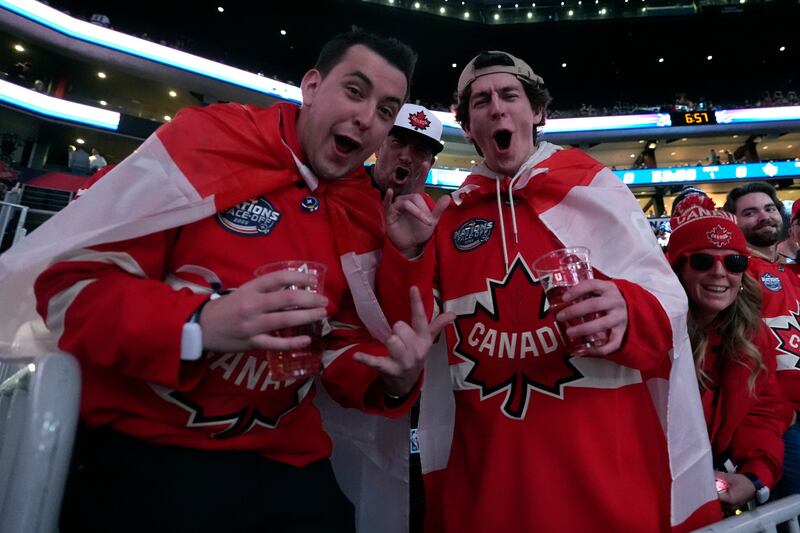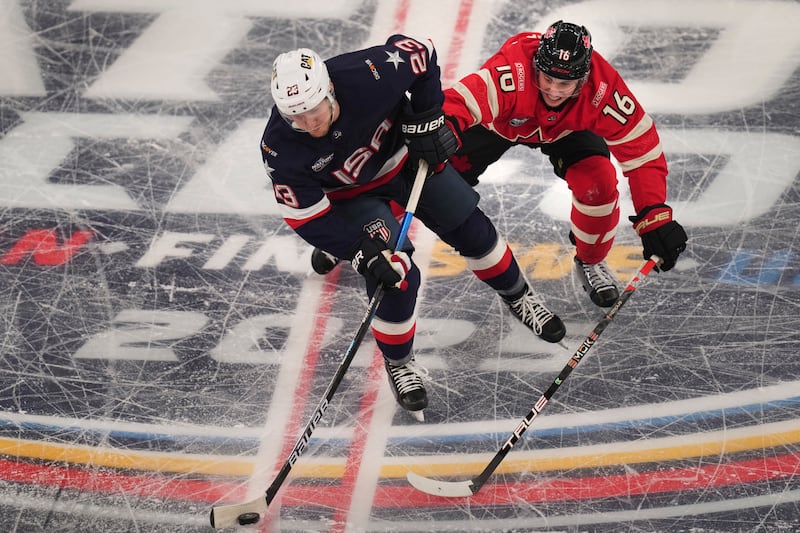Growing the game of hockey — especially outside of Canada — has been a top priority for the NHL in recent years, and it’s finally figured out how to do it: play in more international tournaments.
The 4 Nations Face-Off, an in-season international tournament that concluded Feb. 20, drew unprecedented viewership. Sports fans from all backgrounds tuned in to see the United States and Canada go head to head for gold.
ESPN reported 10.4 million viewers tuned in to the tournament final — more than any non-NFL event has ever had on ESPN+. Sportsnet, which broadcast the tournament in Canada, drew 10.7 million pairs of eyes. That’s more than a quarter of the country’s population.
Plenty of fans may have tuned in due to recent political tensions between North America’s two biggest countries, but many who weren’t familiar with hockey now find themselves interested in it. The sport hooks you by combining basketball’s pace with football’s physicality and excitement.
But no matter how much interest a one-off tournament gets, hockey can’t hit the popularity levels that it should because it isn’t accessible to everyone. Until some major challenges are solved, hockey will remain the fourth-most popular sport in North America.
Cost
To play basketball, the only thing kids need is a ball. Almost everyone has a public court available to them, whether it’s at a school, a public park or elsewhere. The barrier to entry is low. The same can be said about football, soccer, baseball and a number of other sports — but not hockey.
In order to even get a game of street hockey going, kids need sticks, nets, goalie equipment and a puck or a ball. If they want to transition to the ice — even for a casual pickup game — they need skates, helmets and gloves. And if they want to join a league, they need full body equipment, which can cost thousands of dollars.
And it doesn’t end there. Kids grow quickly, meaning they need to replace certain pieces of equipment every few years. Not to mention recurring expenses such as skate sharpening, two types of tape and replacement sticks when they inevitably break.
Oh, and did I mention that ice time is never cheap?
Winnipeg Jets goaltender Eric Comrie told Mike McIntyre of the Winnipeg Free Press this week that he feels bad for how much hockey costs to play.
“It’s ridiculous how expensive it is and it kind of grosses me out thinking about how hard it is for kids to play this game,” he said.
Comrie is one of the lucky ones. His father founded The Brick, one of Canada’s largest furniture stores. His parents had the funds to put him and his siblings through high-level hockey programs, which helped three of them reach the NHL. But he recognizes that most people aren’t as fortunate.
“I hope they can make a program where there’s more opportunities for kids to play,” he said.
The NHL has been running its “Learn to Play” programs for years. Participants receive full sets of hockey equipment and instruction on how to play. USA Hockey has a similar initiative.
It was a program like these that first got Utah Hockey Club star Logan Cooley interested in hockey as a kid.
Infrastructure
Even if an influx of kids suddenly wanted to sign up for hockey, there simply wouldn’t be enough ice time for everyone to play. Other sports just require fields or concrete surfaces, which are present in virtually every neighborhood in America.
But hockey rinks aren’t that easy to come by.
My hometown of Vernon, British Columbia, has three ice surfaces to service its 45,000 residents. The three neighboring towns, with populations ranging from 2,000 to 5,000, each have their own rinks. But even so, I remember frequently practicing at 10:30 p.m. as a teenager because there wasn’t enough ice for everyone to have more favorable times.
Utah HC and other NHL teams are building rinks for their communities to use. The league has an industry growth fund that goes to projects like these. Each team gets an equal portion of the money to grow the game in their respective areas. According to Frank Seravalli of the Daily Faceoff, the NHL has contributed more than $200 million to the fund in the last decade.
But hockey rinks are like potato chips: You can never have enough, but you can sure try.
Exposure
Having lived in both Canada and the United States for extended periods of time, I can confidently say that hockey doesn’t get nearly as much exposure on the south side of the 49th parallel as it does to the north.
Canadian department stores have entire aisles dedicated to hockey equipment and merchandise; TV commercials feature cameos from NHL players; kids trade hockey cards and play the NHL video games; every nearly driveway has a hockey net and every garage door has hundreds of black puck marks.
In the U.S., that culture exists for other sports, but not for hockey.
That’s where tournaments like the 4 Nations Face-Off come in. It’s during events like that where people gain that exposure to the sport and find themselves craving more of it.
Luckily for all you new hockey fans, the NHL announced plans this month to participate in best-on-best international hockey every other year, starting with the 2026 Winter Olympics in Italy.
What’s the solution?
One of the great modern-day philosophers, Dory from “Finding Nemo,” said it best: “Just keep swimming.”
Playing more high-stakes hockey will ensure that people keep discovering the sport. The more interest there is, the more rinks there will be, which creates more room for kids to play. It‘s hard to solve the cost, but there are always ways to manage it.
Growing the game is like walking up a spiral staircase: It may seem like you’re just going in circles, but you’re actually accomplishing what you set out to do.


